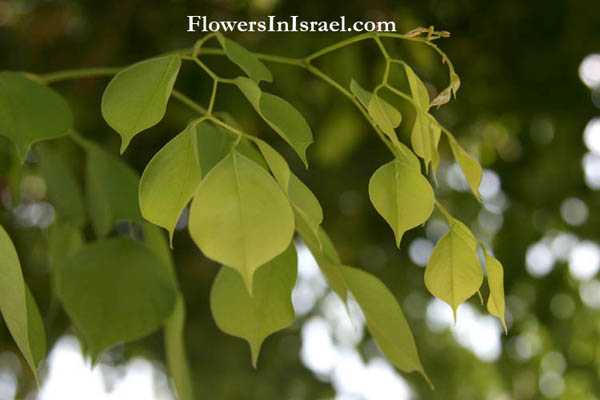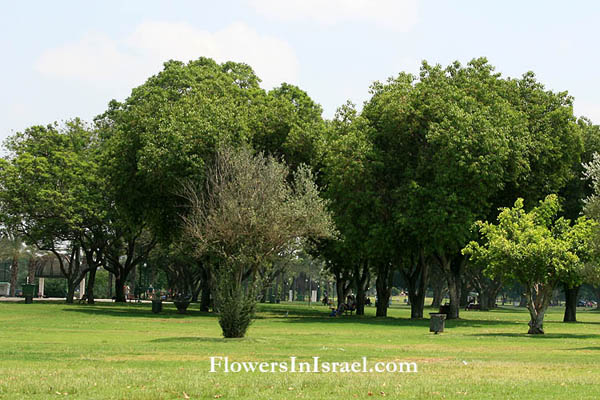Indian Rosewood, Bombay blackwood,
Hebrew: סיסם הודי, Arabic: الساسم
| Scientific name: | Dalbergia sissoo Roxb. | |
| Synonym name: | Amerimnon sissoo (Roxb. ex DC.) Kuntze | |
| Common name: | Shisham, Sheesham, Indian Rosewood, Bombay blackwood | |
| Hebrew name: | סיסם הודי | |
| Arabic name: | الساسم | |
| Plant Family: | Papilionaceae, פרפרניים |

|
| Life form: | Deciduous tree which reproduces by seeds and suckers | |
| Stems: | Up to 9-15 m, spread to 9 m; the bark phellogen of the trunk is smooth and light colored when young but becomes roughened and fissured with age | |
| Leaves: | Alternate, compound, pinnate, leatherly and about 15cm long | |
| Flowers: | Yellow, whitish to pink, fragrant, nearly sessile, upto 1.5cm long and in dense clusters 5-10cm in lenght | |
| Fruit: | Pods are oblong, flat, thin, strap-like 4-8cm long, 1cm wide, and light brown. They contain 1-5 flat-bean shaped seeds 8-10mm long. | |
| Flowering Period: | Spring, Summer | |
| Habitat: | Thermophilous plants | |
| Distribution: | Deserts and extreme deserts | |
| Chorotype: | Tropical | |
| Summer shedding: | Perennating |

Derivation of the botanical name: Dalbergia, named in honour of the Swedish brothers Nils (1736 - 1820) and Carl Dalberg, who lived in the 18th century. The former a botanist and royal physician, and the latter owned an estate in Surinam from where he sent specimens to Linnaeus. sissoo, Hindi word śiśam, in English sissoo. Amerimnon, transliterated as a name for the aizoum plant meant "carefree." Shisham, common Hindi name.
Shisham is among the finest cabinet, furniture and veneer timbers. The heartwood is golden to dark brown, and sapwood white to pale brownish white. The heartwood is extremely durable (Specific Gravity = 0.7- 0.8), and is very resistant to dry-wood termites; but the sapwood is readily attacked by fungi and borers. It is used for plywood, agricultural, and musical instruments, skis, carvings, boats, floorings, etc. |